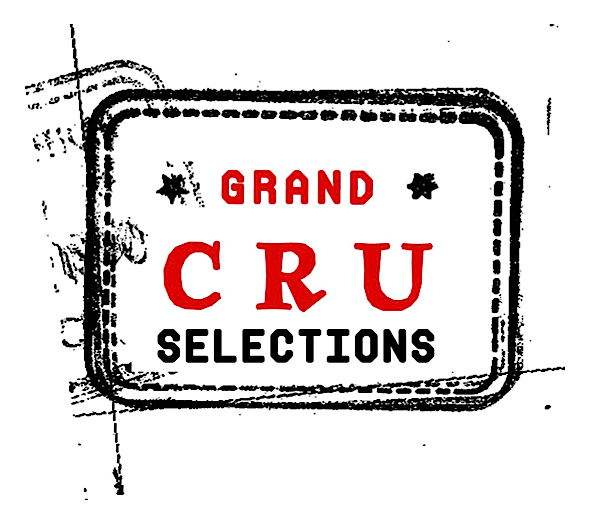JÉROME BRETAUDEAU/DOMAINE DE BELLEVUE
Gétigné, Muscadet, Loire Valley, France
Jérome Bretaudeau
We have long admired the passion, curiosity and experimentation happening chez Jérôme Bretaudeau, a small estate based in Gétigné in the Muscadet region. From his meticulous farming in the vineyards - where classic Melon de Bourgogne vines grow alongside Chardonnay, Savagnin, Pinot Noir and Merlot to his work in the cellar - a kaleidoscope of stainless steel vats, casks, barrels, concrete eggs and amphora that implies someone constantly pushing the limits of what’s possible in this region. His range of wines are a fascinating interpretation of the gabbro, granite and gneiss terroirs, offering just the right balance between ripe fruit and mineral expression.
-
A vigneron with fifteen hectares under his care, spread over the communes of Gétigné, Cugand, Clisson and Vallet, Jérôme Bretaudeau of Domaine de Bellevue unquestionably ranks among the winemakers who truly matter in the Muscadet region.
After starting his career as a vineyard manager for a conventional estate in the early 1990s, he took over two hectares in Gétigné in 2001, expanded to six hectares in 2005, converted to organic viticulture in 2009, and finally went biodynamic in 2016. He is the owner of Melon de Bourgogne vines (90%), as well as Chardonnay, Savagnin, Folle Blanche, Pinot Gris and Sauvignon Gris, which are rather rare in Nantes. In red, the distribution is 40% Cabernet Franc, 12% Gamay noir with white juice, 40% Merlot, 20% Pinot Noir and 12% Cabernet Sauvignon.
-
One cannot discuss Muscadet without turning their attention to gabbro, also known as “black granite” which is similar in composition to basalt. Both gabbro and basalt are igneous rocks, which are rocks that are formed from the solidification of molten lava. The difference is that basalt solidifies above the earth’s surface and gabbro solidifies below the earth’s surface.
-
Rather than selecting only from 'lieu dit' sites, he harvests by age of vine per each soil type. This way he can learn what each vine will bring to his cellar as they come to age.
Certified organic (since 2012), official conversion to biodynamic (in 2016) -
In the cellar, stainless steel vats, casks, barrels, concrete eggs and amphorae form an experimental park of vinification and aging. The wines undergo their malolactic fermentation. The relaxation and energy displayed by the wines are absolutely invigorating: they offer a modern definition of great Muscadets, shining through a fair balance between the maturity of the fruit and the mineral expression.
Wines
Domaine du Bellevue Muscadet Sèvre et Maine
- Size: 5 ha (12.36 ac)
- Variety: Melon de Bourgogne
- Vine Age: Planted from the 1970s to the 1990s
- Terroir: Multiple hillside parcels on silt and sand soils with lots of gabbro rocks (igneous volcanic)
- Vinification: Direct pressing, indigenous yeast fermentation. Aged for 8 months on fine lees in stainless steel and concrete tanks.
Jerome makes three different cuvées of old-vine Muscadet: Gabbro, Granit, and Gaïa. The differences among the three are largely a function of soil types and elevage; all three are fermented in tank over indigenous yeasts at low temperatures. The Gabbro and Granit are tank-aged on their lees with weekly batonage. The Gaïa is unique in that it is aged in ovoid (egg-shaped) amphora.
Gabbro "Clos des Bouquinardières"
100% Melon de Bourgogne from vines farmed biodynamically in the commune of Clisson and planted on gabbro soils. This parcel is in the process of conversion to be certified organic. In the winery: direct pressing, 10 months of maturation on lees in stainless steel vats and concrete vats, with a light dose of sulphites at bottling.
Granit Clos des Perrieres
- Size: 2.5 ha (6.18 ac)
- Variety: Melon de Bourgogne
- Vine Age: Planted in the late 1980s
- Terroir: Rocky soils of granite and white/pink quartz
- Viticulture: Certified organic (since 2012) and biodynamic (Biodyvin, as of 2020)
- Vinification: Indigenous yeast fermentation. Aged for 18 to 24 months on fine lees in concrete tank.
Gaïa Cuvée Ovoide
- Size: 1.5 ha (3.71 ac)
- Variety: Melon de Bourgogne
- Vine Age: Planted in the 1960s
- Terroir: Gabbro (volcanic rock) soil
- Viticulture:Certified organic, official biodynamic conversion
- Vinification: Indigenous yeast fermentation. Aged 18 to 24 months in concrete egg-shaped tanks.
La Justice, Val de Loire
- Size: 0.5 ha (1.24 ac)
- Variety: Chardonnay
- Vine Age: Planted in the late 1980s
- Terroir: Granite and quartz rocky soils
- Viticulture: Certified organic, official biodynamic conversion
- Vinification: Indigenous yeast fermentation. Aged for 14 months in 800-liter amphorae.
Pinot Gris Maceration
- Size: 0.50 ha (1.24 ac)
- Variety: Pinot Gris
- Vine Age: 15 years old
- Terroir: White/pink granite and quartz soils
- Viticulture: Certified organic, official biodynamic conversion
- Vinification: De-stemmed, macerated in concrete tanks for 3 weeks, indigenous yeast fermentation. Aged for 12 months in 400-liter older oak barrel and 800-liter amphora.
V Sens Vin de France Rouge
- Size: 1.5 ha (3.71 ac)
- Variety:70% Cabernet Franc, 30% Merlot
- Vine Age: Approximately 15 to 20 years, massal selection
- Terroir:Granite and white/pink quartz soils, facing south/southeast.
- Viticulture: Certified organic, official biodynamic conversion
- Vinification: 50% whole-cluster, 50% de-stemmed, alternating layers for infusion, indigenous yeast fermentation. Aged for 12 months in foudre with marc. No fining or filtration.
Statera Pinot Noir
- Size: 0.5 ha (1.24 ac)
- Variety: Pinot Noir
- Vine Age: Planted in 2005
- Terroir: Soils of granite, pink and white quartz
- Viticulture: Certified organic, official biodynamic conversion
- Vinification: Indigenous yeast fermentation. Aged for 10 months in older oak barrels.
Ornate Merlot
- Size: 0.5 ha (1.24 ac)
- Variety: Merlot
- Vine Age: Planted early 2000s
- Terroir: Sloped granite with white and pink quartz soils
- Viticulture: Organic (certified since 2010), biodynamic methods
- Vinification: 100% de-stemmed, infusion (lasting about 12 days), indigenous yeast fermentation. Aged for 18 months in recent Burgundian barrels (3 wines' old).

